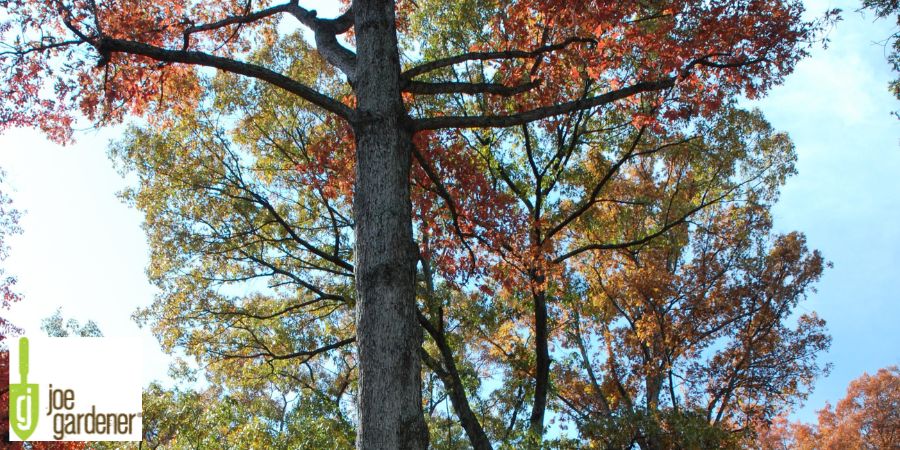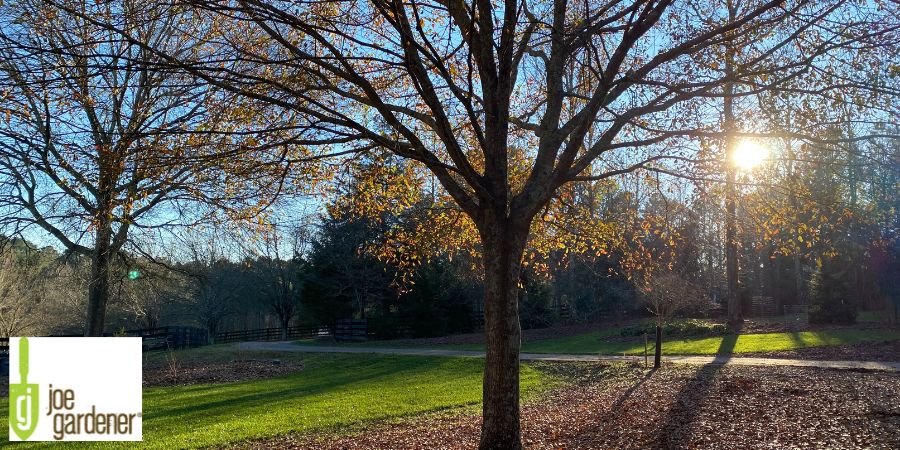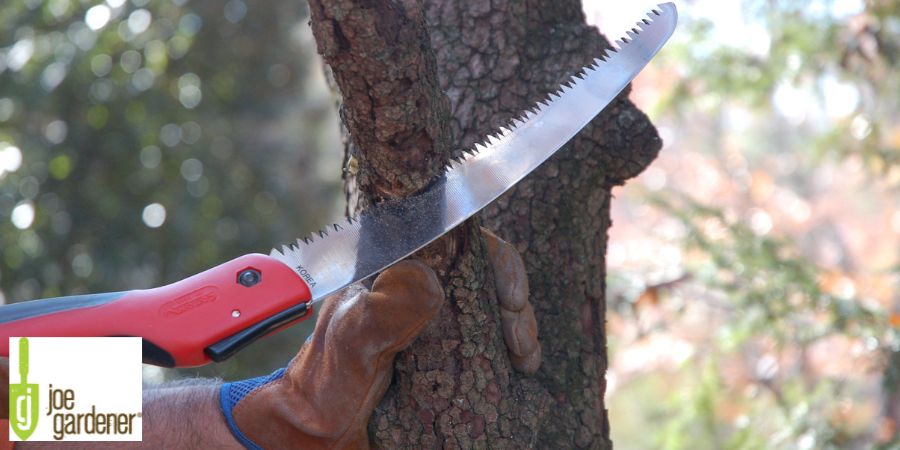Why Limbing Up Trees Can Save Your Lawn & Garden
- Gardening Expert and Host of Growing a Greener World®February 25, 2023
Limbing up trees is an important task to allow more light to reach your lawn and garden. Also known as crown raising, limbing up means removing the lowest branches on a tree, and it’s a great alternative to removing a tree altogether.
Allowing more light to reach the lawn and garden below a tree’s canopy will give your grass and plants a greater chance of success. For many plants, the more light they receive, the better they’ll grow. It’s as simple as that, yet many people fail to consider limbing up as an important tool in their landscaping arsenal.

Tree with bottom limbs removed
If you have a lot of trees that are left unchecked, over time they can easily shade out your entire yard. But with some selective pruning, you will be able to enjoy the beauty of the trees while still allowing enough light through for a healthy lawn and vigorous plants. The light filtering down is sufficient to keep turf lush and sun-loving plants happy.
This annual or biennial exercise is well worth it. I often hear from other gardeners how impressed they are with how well my lawn and plants do, considering how many trees are on my property.
When to Limb Up Trees
The best time to limb up a tree is when it is dormant, in late winter. Pruning when a tree is in dormancy won’t stress the tree and won’t stimulate growth at an inopportune time. If a tree is pruned prior to dormancy, it will respond by putting on new growth that won’t have the opportunity to become hardy before the late winter chill sets in. And in winter, many of the pathogens and pests that attack trees through fresh cuts are inactive.
Another reason to prune in winter is that deciduous trees are bare. The rest of the year, when they have leaves on, it is difficult to gauge which branches should be removed, and the branches are heavier and more difficult to work with when covered in leaves.

Use a Certified Arborist
You can do this job yourself, but I don’t advise it. Limbing up can be dangerous, and it’s easy to make costly mistakes, so I am inclined to hire a professional arborist. An improper cut can lead to the demise of a mature tree, which is not readily replaced. So leave it to a certified arborist who has the training and equipment to get the job done right.
Stay clear of economy tree services. Not everyone with a chainsaw and a pick-up truck knows what they’re doing. Sure, they may get the job done quickly and on the cheap, but it won’t be best for the long-term health of your trees. If your hired help pulls out tree climbing spikes to prune your trees, send them on their way. (Climbing spikes are very harmful to trees and should only be used for complete tree removal.) It’s best to ask to see an arborist’s credentials and insurance before putting any money down and letting it get that far. Arborists pay dearly for certification and insurance, so they’ll gladly show you if you ask.
Which Trees to Limb Up and by How Much
In woodland areas where you aren’t trying to grow grass or understory plants, you don’t need to think about limbing up. But where your plants are looking leggy, shrubs aren’t flowering as they should and grass struggles to get established, think about what you can do to bring more light to the ground. Short of cutting the trees down, limbing up is the next best thing.

I aim to remove as many of the lower limbs as possible. The higher the canopy, the better. Once the job is done, you won’t even miss those limbs. And if you pay attention to uniformity and limb up to around the same height on each tree, you’ll really like the look.
Also consider your shade-loving or shade-tolerant plants, and be judicious in pruning. For instance, I have a bed of azaleas that happily grow under several tall trees. I don’t want to remove the west-facing branches that provide shade and protection to my azaleas from the harsh, late afternoon sun.
Among the other benefits of limbing up trees is creating more headroom and better sight lines. Your yard will feel that much bigger when you can walk around more freely without ducking under branches. Plus, without those low branches creating obstacles, it will also be easier to mow your lawn.

